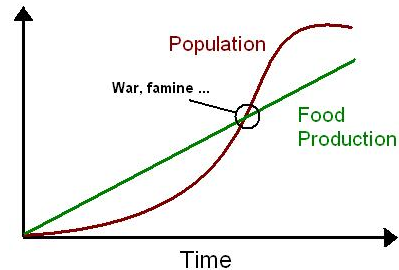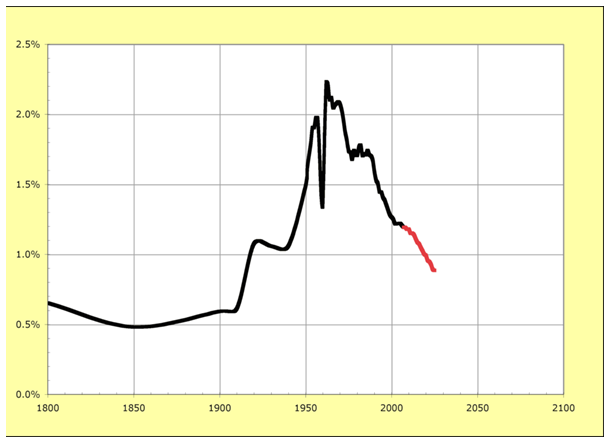Neo Malthusian Dilemma: Principle Of Population
Jan 31,22Neo Malthusian Dilemma: Principle Of Population
Question:
Discuss about the Neo Malthusian Dilemma for Principle of Population.
Answer:
Introduction
Student Name:
Student Id:
Module Name:
Table of Contents
Introduction. 3
Discussion. 3
Conclusion. 6
Reference list 7
Introduction
The Neo Malthusian theory is one of the most significant ideas of considering the growth of the population that is potentially exponential with the development of the food supply. The theory also includes other resources while the resources are linear (Stack, 2018). This kind of linear resource reduces the standard of living of the people to the point of death. Sir Thomas Robert Malthus developed the theory in the 18th century. At that time, Sir Thomas Robert Malthus was a famous English political writer and economist. He developed the theory of Neo Malthusian and included it in his essay called the principle of population.
Discussion
The theory of Neo Malthusian has different names, for example, the theory of crisis, Malthusian crisis, Malthusian trap, population trap and many more. The theory describes the growth of the population that overcomes agricultural production. This kind of overpopulation can create feminine or various kinds of war. It can also create poverty along with depopulation. So the theory mainly generates on the basis of the demographic growth as well as the growth rate of food supply. The theory mainly says that the population of the country or a territory naturally increases by various geometric ratios. On the other hand, the production of agricultural subsistence and other resources do not develop by geometric ratios. These products are developed by mathematical ratios. If the rate of growth of the population overcomes the rate of growth of the agricultural products then it would be very difficult for that overpopulation to survive. These two natural tendencies can generate various periodic crises of the supply of food items. The crises of food can be reduced by using the size of the low population. Neo Malthusian theory describes two main formats of checking the size of the population (Unat, 2020). One of them is called the positive checks that include famine, war, pandemics and many more. On the other hand, the other format is called preventive checks. The format of preventive check can include various kinds of the birth control system, abortion, infanticides and many more. As this kind of population growth can create scarcity of food, these are the ultimate conditions of checking the growth of the population. In a later version, Sir Malthus revised the calculation of the growth of the population. This time sir Malthus added different types of checking systems for checking the population.

Figure 1: The image of neo Malthusian theory
Source: (Unat, 2020)
Both versions present various fundamental premises for those two natural tendencies. One of them is the unlimited demographic expansion and the other one is the limited production of the food items. The theory of Neo Malthusian mainly shares the premises of opposing various tendencies. The theory also applies the disproportionate expansion between the rate of population and the rate of food production. The theory also describes the disproportion between the rate of mineral resources and their consumption, the expansion of technological factors, various formats of pollution and many more (Leridon, 2020). The theory also describes the finite capacity of the globe as the theory includes the limited minerals of the globe. It also included various fossil reserves that has very little capacity and scope to absorb the pollutants. Thus the theory of Neo Malthusian describes a lot more than the demographic growth. The theory includes various techniques as well as industrial expansion approaches in order to achieve the carrying capacity of the globe.

Figure 2: The image of the growth rate of the world population
Source: (Collins & Page, 2019)
Here the above figure presents the growth rate of the total population that is increasing day by day across the whole world (Collins & Page, 2019). So, it is true that the particular part of the generation is also increasing. According to the theory of Malthusian, the growth of the population doubles every twenty-five years. It is found from many types of studies that the population in the United States was seventeen million in 1850. After a century, according to the census bureau of the United States, the growth of population had risen to more than 149.5 million that is remarkable. Sir Malthus said that this kind of overpopulation may lead the country towards war or famine. This kind of over-population may create a pandemic of any diseases. The country or the territory may not be able to feed every person socially and finally, they would die. The theory includes various notions that are related to various ecological scarcities. It is essential for the measurement of various natural organic tolerances. This time the theory was wrong because in the early stage of 1900 and the middle stage of 1900 it was found that the rate of conventional food items increased a lot. At this time, the level of the efficiency of food production was also increased. Not only that but various supplies were also produced with a few works (Ojeda, Sasser & Lunstrum, 2020). The supplies were very time effective and it needed only a few resources to perform.
Conclusion
Besides, various kinds of processed foods were also produced. As most people wanted to work less in the kitchen area so they processed a huge amount of food for further uses. That is the reason the theory of Neo Malthusian faces much criticism. Sir Karl Marx argued that the theory of neo-Malthusian failed to identify the crucial differences between human beings and other animals. In various capitalist societies, it is seen that the progress of food production was as quick as the progress of population. On the other hand, Sir Henry George criticised the theory by saying that the theory wrongfully said that the growth of population was created by the growth of poverty. He said that this is wrong because poverty can be created by the ownership of land and other natural resources. Henry George again noted that human beings are distinct forms of other species because most human beings can use their mind in order to leverage productive forces. These are some of the criticisms of the theory.
Reference list
Collins, J., & Page, L. (2019). The heritability of fertility makes world population stabilization unlikely in the foreseeable future. Evolution and Human Behavior, 40(1), 105-111. DOI: https://doi.org/10.1016/j.evolhumbehav.2018.09.001
Leridon, H. (2020). World population outlook: Explosion or implosion?. Population Societies, (1), 1-4. Retrieved from: https://www.cairn-int.info/journal-population-and-societies-2020-1-page-1.htm?WT.tsrc=cairnPdf
Ojeda, D., Sasser, J. S., & Lunstrum, E. (2020). Malthus’s specter and the anthropocene. Gender, Place & Culture, 27(3), 316-332. DOI: https://doi.org/10.1080/0966369X.2018.1553858
Stack, D. (2018). Beyond the facts’: how a US sociologist made John Stuart Mill into a ‘Neo‐Malthusian. Historical Research, 91(254), 772-790. DOI: https://doi.org/10.1111/1468-2281.12246
Unat, E. (2020). A review of Malthusian theory of population under the scope of human capital. FORCE: Focus on Research in Contemporary Economics, 1(2), 132-147. Retrieved from https://www.forcejournal.org/index.php/force/article/view/14





